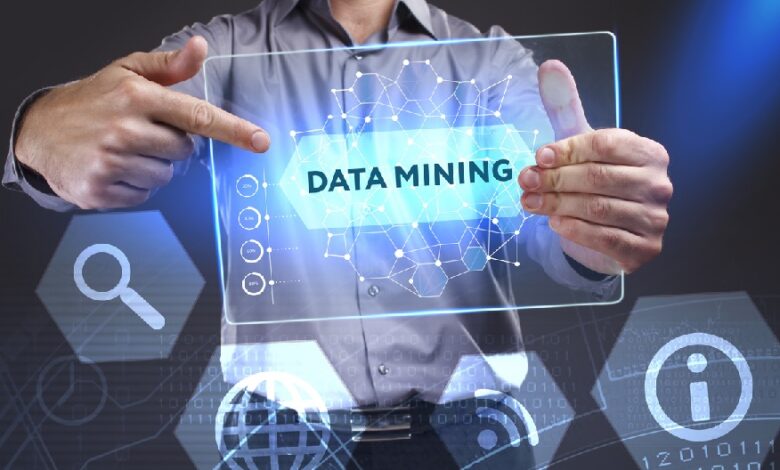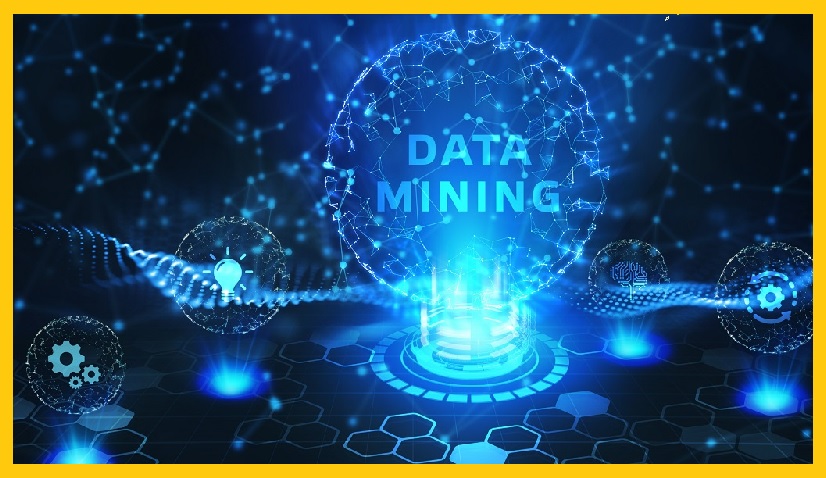What is Data Mining? Definitions and Examples

Data mining is the process of finding huge amounts of data instantly for patterns and themes which go beyond basic analysis. To section the results and analyze the data and make predictions, data mining terms available mathematical formulas. Knowledge Discovery in Data is another name for data mining (KDD).
The Following are Some of the Most Important Characteristics of Data Mining
- Pattern recognition is done automatically.
- Probable outcomes forecasting
- Information that can be used.
- Concentrate on massive databases and data sets.
- Data mining can provide answers to questions that aren’t easily answered using traditional query and reporting methods.
Key Properties of Data Mining
Automatic Recognition-
Building models is how data mining is done. To operate on a collection of data, a method utilizes an algorithm. The implementation of data mining methods is referred to as automatic discovery.
Systems for data mining can also be used to mine the information on which they are based, but the majority of algorithms can be generalized to new data. Grading is the method of assigning a system to new data.
Prediction-
Many types of data mining can be used to anticipate outcomes. For example, depending on schooling and other demographic characteristics, a model could forecast income.
Expectations have a probability attached to them (How probable is this estimation to come true?). Probabilities of prediction are frequently referred to as confidence (How confident am I in this forecast?).
Read Also:-
Some types of educational data mining provide rules, which are situations that suggest a specific result.
A rule might state, for example, that someone with a bachelor’s degree who resides in a given neighborhood is more likely to earn more than the regional average. There is a support system for rules.
Grouping-
Other types of data mining look for natural information sets. A model might, for illustration, define the sector of the population with just a salary over a certain level, a clean driving record, and an annual leasing of a new vehicle.

Information that Can be Used-
Data mining is a technique for extracting useful information from large amounts of data. A planner, for instance, might construct a low-income housing program that used a model that can predict cost depending on demographics. An automobile leasing company might utilize a customer segmentation model to create a campaign for elevated customers.
Statistics and Data Mining-
The fields of data mining & statistics have a lot in common. In reality, most data mining approaches may be put inside a statistical model. Data mining methods, on the other hand, are not like standard statistical methods.
Traditional Statistical Methods-
In order to verify the validity of a model, conventional statistical methods generally demand a lot of user input. As a result, automating statistical approaches might be problematic.
Statistical procedures, on the other hand, often do not expand well to very big data sets. Statistical processes depend on small, sample groups of a bigger population to test theories or find relationships.
OLAP and Data Mining-
Online analytical processing (OLAP) is the evaluation of able to share multi-dimensional information in real-time. Data mining and OLAP are two distinct yet complementary tasks.
Information summary, standard costing, time series forecasting, as well as what analysis are all supported by OLAP. Meanwhile, often these OLAP systems do not even have inferential inference functionality further than the assistance for the period forecast.
Deductively implication, the procedure of trying to reach a conclusive result from particular examples, is a distinctive feature of data mining.
Data Mining and Data Warehousing–
Data can be mined in a variety of formats, including flat files, spreadsheets, database tables, and other types of storage. The main requirement again for data is not really the storing format, but its appropriateness to the issue to be resolved.
For data mining, good data purification and prep are critical, and a data warehouse can help with this. A data warehouse, on the other hand, is useless unless it contains the information users have to improve their chances.
What Can & Can’t Data Mining Do?
Data mining is an effective instrument for uncovering correlations in large amounts of data. Data mining, on the other hand, doesn’t really work independently.
It does not take away a need to recognize your company, your information, or someone’s analysis tools. Data mining can help users find secret knowledge in information stored, but it can’t tell you how valuable that data is to business.
The Right Questions to Ask-
Without instruction, data mining doesn’t really automatically detect answers. Based on how users define the question, the pattern user discovers via data mining will be extremely different.
Recognize Your Information-
You must first comprehend your data in order to get significant data mining outcomes. Outliers, unimportant columns, articles that change together, coding, and data as selected to include or omit are all factors that machine learning algorithms take into account.
Most of the data pre-processing required by Oracle Data Analysis may be automatically done.
The Data Mining Process-
A data mining project’s phases and repetitive nature are described in the Data Mining Process. The current process indicates that a data mining project doesn’t really end after a solution is formed.
Data mining findings prompt new company queries that can then be used to construct more targeted models.

Problem Definition–
The first phase of a data mining model is spent learning about the project’s goals and requirements. After you’ve defined the project from a business standpoint, you may turn it into a data mining challenge and create a rough implementation strategy.
Obtaining and Preparing Data-
Data collection and investigation are part of the data comprehension phase. You can tell how effectively the data meets the business challenge by looking at it more closely. You might want to change some of the information or add more. That’s also the time to look for existing data and detect data quality issues.
Model Building and Evaluation-
You select the most appropriate several modeling strategies in this step, as well as adjust the parameters to an ideal level. You’ll have to go back to the previous one to apply processed data if the method needs them.
Knowledge Deployment-
The use of data analysis within a specific condition is considered knowledge deployment. Information can be used to extract insights and actionable data throughout the implementation stage.
Example of Data Mining
Data mining’s predictive capability has revolutionized the way company plans are designed. You may now foresee the future by understanding the current. These are some contemporary industrial instances of data mining.
Marketing. Data mining is being used to sift through ever-larger databases and enhance market segmentation. It is possible to determine the behavior of customers by analyzing the associations between criteria such as user age, gender, tastes, etc. in order to design personalized loyalty marketing.
In marketing, data mining forecasts which consumers are likely to resign from service, what attracts them depending on their queries, or what should be included in a mailing list to get a greater inquiry rate.
Data Mining’s Benefits
- Companies can collect experience and understand data using Data Mining methods.
- Data mining allows businesses to make profitable improvements to their technology and operations.
- Data mining is a cost-effective alternative to conventional statistical information applications.
- Data mining aids a group’s choice processes.
- It allows for the automatic finding of patterns and insights as well as trends and behavior forecasting.
- It is possible to introduce it into both new and existing systems.
- It’s a rapid technique that allows new users to examine big amounts of information in a short period of time.
Data Mining Drawbacks
- There is a chance that businesses will sell valuable consumer data to other businesses for a profit. According to the allegation, American Express has sold client credit card payments to these other businesses.
- Many data mining analysis software packages are hard to use and need advanced training.
- Because of the various algorithms utilized in their development, various data mining devices work in different ways. As a result, deciding on the best data mining tools is a difficult undertaking.
- Because data mining methods are not exact, they may have serious repercussions in some circumstances.






